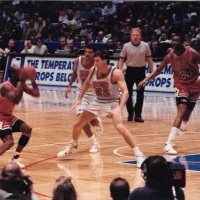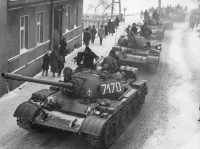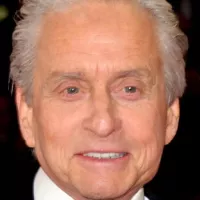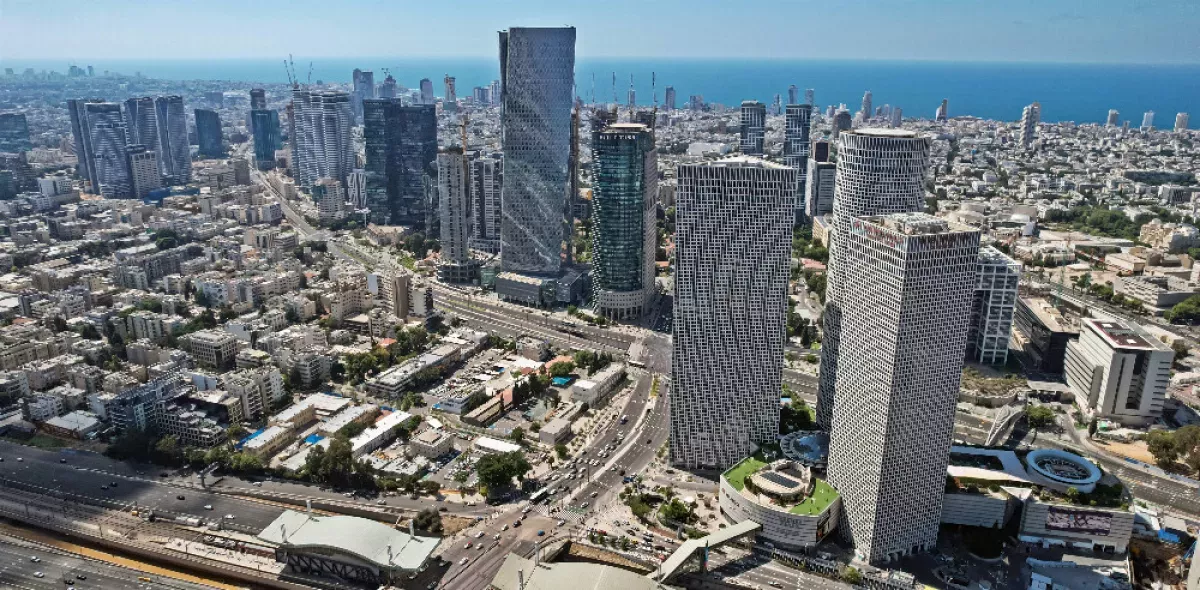Tel Aviv-Yafo, commonly known as Tel Aviv, is the biggest city in Israel's Gush Dan region, boasting 474,530 residents. Situated on the Mediterranean coast, it thrives as Israel's economic and technological hub with global recognition in high tech. When considering East Jerusalem as part of Israel, Tel Aviv ranks as the second most populous city; otherwise, it claims the top spot, surpassing West Jerusalem.
1902: Publication of "Altneuland"
Theodor Herzl's novel "Altneuland" ("Old New Land") was published in 1902, which would later lend its Hebrew title, Tel Aviv, to the newly founded city.
1904: Establishment of Ohel Moshe
Ohel Moshe, another Jewish neighborhood, was established in 1904 as part of the Jewish expansion outside of Jaffa.
1905: Establishment of Herzliya Hebrew Gymnasium
The first Hebrew high school, Herzliya Hebrew Gymnasium, was founded in Jaffa in 1905.
1906: Formation of Ahuzat Bayit Society
In 1906, the Ahuzat Bayit society was formed with the goal of creating a "Hebrew urban center" that was modern and hygienic.
1906: Establishment of Kerem HaTeimanim
Kerem HaTeimanim, a Jewish neighborhood, was established in 1906, adding to the growing Jewish presence in the area.
1906: Founding of Herzliya Hebrew High School
The Herzliya Hebrew High School was founded in Jaffa in 1906, later relocating to Tel Aviv.
1906: Founding of Maccabi Tel Aviv Sports Club
The Maccabi Tel Aviv Sports Club was established in 1906, participating in over 10 sports.
April 1909: Land Parcelled Out
On April 11, 1909, 66 Jewish families gathered to parcel out land using seashells, marking the official date of Tel Aviv's establishment.
July 1909: Cornerstone Laid for Herzliya Hebrew High School
The cornerstone for the Herzliya Hebrew High School, originally founded in Jaffa in 1906, was laid on July 28, 1909.
1909: Vision for a Modern City
Although founded as a small settlement in 1909, Tel Aviv was envisaged as a future city, designed to be clean and modern, inspired by European cities like Warsaw and Odesa.
1909: Relocation of Herzliya Hebrew Gymnasium
Following its establishment in Jaffa, Herzliya Hebrew Gymnasium was moved to Tel Aviv in 1909, with a new campus built on Herzl Street.
1909: Founding of Tel Aviv
Tel Aviv was founded in 1909 by the Yishuv (Jewish residents) as a modern housing estate on the outskirts of Jaffa. It was initially named Ahuzat Bayit.
1909: Ottoman Rule Begins
Tel Aviv's history under the Ottoman Empire began in 1909 with its founding.
May 1910: Official Adoption of the Name "Tel Aviv"
On May 21, 1910, the name Tel Aviv, meaning "Hill of Spring," was officially adopted for the new city.
1910: Adoption of the Name "Tel Aviv"
The name "Tel Aviv", the Hebrew title of Theodor Herzl's novel "Altneuland", was chosen for the city in 1910 from several suggestions.
1914: Growth of Tel Aviv
By 1914, Tel Aviv had expanded to cover over 1 square kilometer (247 acres).
1915: First Census of Tel Aviv
A census conducted in 1915 recorded Tel Aviv's population at 2,679.
May 1916: Record High Temperature
Tel Aviv experienced its highest recorded temperature of 46.5 °C (115.7 °F) on May 17, 1916.
April 1917: Expulsion of Residents
In April 1917, Ottoman authorities expelled the residents of Jaffa and Tel Aviv as a wartime measure, primarily targeting the Jewish population.
1917: British Conquest during World War I
In late 1917, during World War I, the British imperial army conquered Tel Aviv, along with the rest of the Jaffa municipality, as part of the Sinai and Palestine Campaign.
1917: End of Ottoman Rule
Ottoman rule in Tel Aviv ended in 1917 when the British took control of Palestine during World War I.
1917: British Control Begins
The British took control of Palestine in 1917, marking the beginning of British rule in Tel Aviv.
1919: Influx of Artists from Odessa
The arrival of several prominent artists from Odessa on the ship "Ruslan" in 1919 marked a pivotal moment in Tel Aviv's artistic development. These artists played a crucial role in shaping the city's burgeoning art scene.
1920: HaTomer Art Cooperative and First Modern Art Exhibition
In 1920, some of the artists who had arrived from Odessa the previous year established the HaTomer art cooperative and organized the first modern art exhibition in Israel, solidifying Tel Aviv's position as a center for artistic expression.
1920: Opening of Tel Aviv Beit Hadar Railway Station
The Tel Aviv Beit Hadar railway station commenced operations in 1920 as part of the Jaffa–Jerusalem railway.
May 1921: Jaffa Riots
On May 1, 1921, riots broke out in Jaffa, resulting in numerous Arab and Jewish casualties. The violence led many Jews to leave Jaffa and seek refuge in Tel Aviv.
1921: Township Status
Tel Aviv was granted township status within the Jaffa Municipality in 1921.
1922: Population Census
A census conducted in 1922 by British Mandate authorities revealed that Tel Aviv had a population of 15,185, with a Jewish majority.
June 1923: Electrification of Tel Aviv
In a pioneering move for Palestine, Tel Aviv became the first town to be wired for electricity in June 1923. The Jaffa Electric Company powerhouse illuminated the city's main streets, marking a significant step in its development.
1923: Establishment of Hapoel Tel Aviv Sports Club
The Hapoel Tel Aviv Sports Club was founded in 1923, comprising over 11 sports clubs, including their renowned football and basketball clubs.
1924: Construction of Pagoda House
Designed by Alexander Levy, Pagoda House (Beit HaPagoda) was built in 1924, exemplifying the eclectic Orientalist architectural style prevalent in Tel Aviv during the 1920s.
1925: Population Growth
By 1925, Tel Aviv experienced significant population growth, reaching around 34,000 residents.
1925: David Bloch's Short Tenure as Mayor
David Bloch served as the mayor of Tel Aviv for a brief period of two years, from 1925 to 1927, making his the shortest mayoral term.
1925: Geddes Plan for Urban Development
In 1925, renowned town planner Patrick Geddes devised a master plan for Tel Aviv's development. Adopted by the city council, the plan, influenced by the garden city movement, shaped the urban landscape of northern Tel Aviv.
1925: Isaac Frenkel Frenel Returns, École de Paris Influence Grows
Isaac Frenkel Frenel's return to Tel Aviv from Paris in 1925 and the subsequent establishment of his Histadrut art studio ushered in a new wave of artistic influence from the École de Paris. This had a profound impact on the city's art scene, particularly in modern art.
1925: Patrick Geddes' Master Plan
Patrick Geddes created a master plan for Tel Aviv in 1925, based on the garden city movement, outlining a vision for the city's development.
1926: Construction of Passage Pensak
Passage Pensak, the first shopping arcade in Palestine, was constructed in Tel Aviv in 1926, signifying the city's developing commercial landscape.
1930: Construction of Ben Gurion House
Ben Gurion House, now a historical landmark, was constructed in 1930 as part of a new workers' housing development in Tel Aviv.
1931: Population Census and Housing
The 1931 census recorded Tel Aviv's population at 46,101, residing in 12,545 houses, indicating continued growth and development.
1931: Cultural Growth and Habima Theatre
The year 1931 marked a significant period for Tel Aviv's cultural scene with the establishment of the Ohel Theatre and the decision of the Habima Theatre to make Tel Aviv its permanent home, solidifying the city's position as a cultural hub.
1931: Bauhaus Construction Boom Begins
The years between 1931 and 1939 saw a significant period of construction in Tel Aviv, with around 3,000 buildings designed in the Bauhaus style being erected. This influx of Bauhaus architecture was influenced by German Jewish architects escaping Nazi Germany.
1932: Tel Aviv Museum of Art Founded
The year 1932 witnessed the establishment of the Tel Aviv Museum of Art in the former home of Meir Dizengoff. This marked a significant step in solidifying the city's dedication to art and culture.
1934: Independence from Jaffa
In 1934, due to rapid growth fueled by Jewish immigration, Tel Aviv became independent from Jaffa.
1934: Independent Municipality Status
Tel Aviv was granted independent municipality status separate from Jaffa in 1934, marking a crucial step in its growth and autonomy.
1935: Establishment of Tel Aviv Rowing Club
The Tel Aviv Rowing Club, Israel's largest rowing club, was established in 1935 along the banks of the Yarkon River.
1936: Growth and Development of Tel Aviv
By 1936, fueled by a wave of European immigration, Tel Aviv had become the largest city in Palestine, boasting a new port, a vibrant cultural scene, and a bustling commercial center on Herzl Street.
1936: Friction and the Arab Revolt
The years 1936-1939 saw increased friction and the eruption of the Arab revolt, impacting Tel Aviv's relationship with neighboring Arab communities.
1937: Opening of Lydda Airport
Lydda Airport, later renamed Ben Gurion Airport, was inaugurated in 1937, enhancing Tel Aviv's connectivity and accessibility.
1938: Establishment of Tel Aviv Port
In response to tensions and the Arab revolt, Tel Aviv established its own port in 1938, operating independently from Jaffa until its closure in 1965.
1939: Population Growth and Jewish Immigration
By 1939, Tel Aviv's Jewish population surged to 160,000, a testament to the impact of Jewish immigration and its growing importance as a center of Jewish life.
1939: Bauhaus Construction Boom Ends
By 1939, the intensive construction of Bauhaus-inspired buildings in Tel Aviv started to decline. This period marked the end of a significant era in shaping the city's architectural landscape.
September 1940: Italian Airstrikes during World War II
On September 9, 1940, during World War II, Tel Aviv was targeted by Italian airstrikes, resulting in the tragic loss of 137 lives.
1945: Population of Jaffa
By 1945, Jaffa had a diverse population of 101,580, comprising Muslims, Jews, and Christians, reflecting the complex demographics of the region.
March 1947: Martial Law Imposed
In March 1947, Tel Aviv was placed under martial law by the British for 15 days as part of a larger crackdown on Jewish insurgency in Palestine. Residents faced strict curfews, with limited hours of movement.
1947: UN Partition Plan and the Fate of Tel Aviv and Jaffa
The 1947 UN Partition Plan proposed a division of Palestine into Jewish and Arab states. Tel Aviv was slated to be part of the Jewish state, while Jaffa, with its mixed population, was designated for the Arab state. This decision fueled tensions and conflicts.
1947: Beginning of the 1947–1949 Palestine War
The 1947–1949 Palestine war began, which would have significant implications for the future of Tel Aviv and Jaffa.
May 1948: Fall of Jaffa and Mass Exodus
After months of siege and conflict, Jaffa fell on May 13, 1948, leading to a mass exodus of its Arab population, dramatically altering the demographic landscape of the region.
May 1948: Declaration of Independence and Egyptian Attacks
Following Israel's declaration of Independence, Tel Aviv served as the temporary government center. The city endured bombing raids by Egyptian forces, resulting in significant casualties and damage.
June 1948: Israeli Air Force Victory and the Altalena Affair
June 1948 witnessed the Israeli Air Force's first aerial victory over Tel Aviv when Egyptian bombers were shot down. The city also became the setting for a confrontation between the IDF and the Irgun during the Altalena Affair, highlighting internal tensions amid the war.
December 1948: Annexation of Jaffa Suburbs
On December 10, 1948, the Israeli government announced the annexation of several areas, including Jewish suburbs of Jaffa, the Palestinian neighborhood of Abu Kabir, and the village of Salama, to Tel Aviv, expanding the city's boundaries.
1948: Closure of Jaffa Railway Station
Jaffa railway station, the first railway station in the Middle East, ceased operations in 1948.
1948: End of British Mandate
The British Mandate for Palestine ended in 1948, paving the way for the establishment of the State of Israel.
1948: Declaration of Independence
The Israeli Declaration of Independence was proclaimed in Tel Aviv in 1948, and the city was named the founding capital of Israel.
1948: Establishment of Israel
The State of Israel was established in 1948, with Tel Aviv playing a pivotal role as the site of the declaration of independence.
February 1949: Annexation of al-Shaykh Muwannis
The depopulated Palestinian village of al-Shaykh Muwannis was annexed to Tel Aviv on February 25, 1949, further extending the city's reach.
May 1949: Annexation of Manshiya and Central Jaffa
On May 18, 1949, significant portions of Jaffa, including Manshiya and part of its central zone, were incorporated into Tel Aviv, marking a major expansion that included land originally designated for the Arab state.
October 1949: Vote for Unification
The Israeli government formally voted to unify Tel Aviv and Jaffa in October 1949. However, the implementation faced delays due to opposition from Tel Aviv's mayor.
December 1949: Relocation of Israeli Government
In December 1949, the Israeli government relocated its offices to Jerusalem. However, the issue of Jerusalem's status remained a point of international contention, leading many embassies to stay in or near Tel Aviv.
1949: End of the 1947–1949 Palestine War
The 1947–1949 Palestine War ended, and Tel Aviv began the process of annexing parts of Jaffa.
February 1950: Record Low Temperature and Snowfall
The lowest recorded temperature in Tel Aviv, −1.9 °C (28.6 °F), occurred on February 7, 1950, during a cold wave that brought the only recorded instance of snowfall to the city.
April 1950: Implementation of Unification
After months of delay, the unification of Tel Aviv and Jaffa was finally implemented on April 24, 1950, creating a single municipality.
April 1950: Tel Aviv and Jaffa Unified
In April 1950, Tel Aviv began the municipal annexation of parts of Jaffa, and the two cities were fully unified under the name Tel Aviv.
August 1950: Tel Aviv-Yafo
Following the unification of Tel Aviv and Jaffa, the city was formally renamed to Tel Aviv-Yafo in August 1950.
1962: Plácido Domingo Joins Israeli Opera
In 1962, renowned tenor Plácido Domingo became a resident performer at the Israeli Opera in Tel Aviv. This marked a significant moment in the opera house's history, attracting international attention and acclaim.
October 1965: Closure of Tel Aviv Port
After nearly three decades of operation, Tel Aviv Port closed on October 25, 1965.
1965: Shalom Meir Tower Completed
1965 marked the completion of the Shalom Meir Tower in Tel Aviv, establishing it as Israel's first skyscraper. The building's height was unmatched in the country and even rivaled the tallest structures in Europe at the time.
1965: Plácido Domingo Concludes Tenure at Israeli Opera
After a successful three-year tenure, Plácido Domingo concluded his time as a resident performer at the Israeli Opera in Tel Aviv in 1965. His performances during this period left a lasting legacy on the city's opera scene.
1965: Completion of the Shalom Meir Tower
The Shalom Meir Tower, Israel's tallest building until 1999, was completed in 1965 after the controversial demolition of the Herzliya Hebrew Gymnasium.
1970: Replacement of Tel Aviv Beit Hadar Railway Station
Tel Aviv Beit Hadar railway station was replaced in 1970, and a new station, Tel Aviv South, was opened.
1971: Tel Aviv Museum of Art Relocates
The Tel Aviv Museum of Art moved to a larger, dedicated building in 1971, reflecting the growth and importance of art in the city. This relocation provided a more prominent and spacious venue for showcasing art to a wider audience.
1972: Establishment of Kiryat Atidim
The Kiryat Atidim high-tech zone was established in 1972, laying the groundwork for Tel Aviv's emergence as a global high-tech center.
1973: Tel Aviv Cinematheque Opens
The Tel Aviv Cinematheque first opened in 1973 and would later relocate to a new building in 1989.
1980: Relocation of Embassies to Tel Aviv
Following Israel's 1980 Jerusalem Law, 13 embassies situated in Jerusalem relocated to Tel Aviv, in line with UN measures. Today, most national embassies are located in Tel Aviv and its surrounding areas.
1980: Concerns About Tel Aviv's Decline
In 1980, an article titled "Is Tel Aviv Dying?" highlighted the city's issues, including residents leaving, businesses encroaching on residential areas, socioeconomic disparities, neighborhood deterioration, and air pollution.
1981: Absolute Population Decline in Tel Aviv
By 1981, Tel Aviv experienced not just a natural decrease but an absolute decline in population, a trend that began in the early 1970s.
1983: Population Decline and Aging
In the late 1980s, Tel Aviv's population dropped to 317,000 due to high property prices that forced families to relocate and discouraged young couples from moving in. The average age of residents in 1983 was 35.8, and the population over 65 constituted 19%.
1983: Opening of Dizengoff Center
Israel's first shopping mall, the Dizengoff Center, was completed in 1983.
1987: Construction of Marganit Tower
The Marganit Tower was constructed in 1987.
1989: Tel Aviv: The Nonstop City
By 1989, Tel Aviv earned the nickname "Nonstop City" due to its thriving nightlife and 24/7 culture, a shift from its previous image as the "First Hebrew City". The Suzanne Dellal Center for Dance and Theater also opened this year, while the Tel Aviv Cinematheque, opened in 1973, moved to its current building.
1991: Iraqi Scud Missile Attacks During the Gulf War
During the Gulf War in 1991, Iraq targeted Tel Aviv with Scud missile attacks. Every city in the Tel Aviv area, except Bnei Brak, was struck. While the US-provided Patriot missiles proved largely ineffective, Israel refrained from retaliating to maintain the US-Arab alliance. The attacks resulted in 74 Israeli fatalities, primarily from suffocation and heart attacks, along with 230 injuries. The attacks also caused widespread property damage, leaving around 4,000 Israelis homeless.
1992: Yael Arad's Olympic Silver Medal
Yael Arad, a judoka from Maccabi's judo club, secured a silver medal at the 1992 Olympic Games.
1993: Tel Aviv Recognized as a World City
In 1993, Tel Aviv was officially recognized as a world city.
1993: Closure of Tel Aviv South Railway Station
The Tel Aviv South railway station, which had replaced the Beit Hadar station, was closed in 1993.
October 1994: First Suicide Attack in Tel Aviv
On October 19, 1994, Tel Aviv experienced its first suicide bombing on a Line 5 bus. The attack, part of a Hamas campaign, resulted in 22 civilian deaths and 50 injuries.
November 1995: Assassination of Yitzhak Rabin
On November 4, 1995, Israeli Prime Minister Yitzhak Rabin was assassinated at a rally in Tel Aviv supporting the Oslo peace accord. The plaza where the assassination occurred was renamed Rabin Square in his memory.
March 1996: Dizengoff Center Suicide Bombing
On March 6, 1996, a Hamas suicide bomber detonated explosives in the Dizengoff Center, killing 13 people, including many children. The attack also left 12 civilians and one soldier injured.
March 1997: Café Apropo Bombing
Three women were killed in a bombing at the Café Apropo on March 27, 1997, perpetrated by a Hamas terrorist.
1998: Tel Aviv Faces Financial Crisis
By 1998, Tel Aviv found itself on the brink of bankruptcy due to years of shrinking tax revenue caused by a prolonged population decline. This financial strain limited the city's ability to invest in its deteriorating infrastructure and housing.
1998: Tel Aviv's Global Technological Influence
Newsweek recognized Tel Aviv as one of the 10 most technologically influential cities globally in 1998, solidifying its reputation as a center for innovation.
1998: Ron Huldai Becomes Mayor
Ron Huldai assumed the position of mayor of Tel Aviv in 1998, marking the beginning of his tenure.
1999: Shalom Meir Tower Loses Title
After holding the title of Israel's tallest building for over three decades, the Shalom Meir Tower was surpassed in height in 1999. This marked a change in Tel Aviv's skyline as new skyscrapers began to emerge.
1999: End of Shalom Meir Tower's Reign
In 1999, the Shalom Meir Tower, which had held the title of Israel's tallest building since its completion in 1965, was surpassed by a new structure.
June 2001: Dolphinarium Discothèque Bombing
A suicide bomber detonated explosives at the entrance to the Dolphinarium discothèque on June 1, 2001, during the Second Intifada. This attack resulted in the deaths of 21 individuals, most of whom were teenagers, and injured 132 others.
2001: Florentin Neighborhood Revitalization
In 2001, Tel Aviv initiated a major restoration and gentrification project in the Florentin neighborhood, incorporating green spaces, pedestrian zones, and housing based on reworked plans from the 1920s.
2003: UNESCO World Heritage Site
In 2003, Tel Aviv's White City was designated as a UNESCO World Heritage site, leading to new laws and initiatives to protect and preserve its Modernist architecture.
February 2005: Stage Club Bombing
On February 25, 2005, an Islamic Jihad bomber detonated explosives at the Stage Club, resulting in five fatalities and over 50 injuries.
2005: Restoration of Jaffa Railway Station Begins
The restoration of Jaffa railway station, aiming to transform it into an entertainment and leisure venue, commenced in 2005.
April 2006: Suicide Bombing Near Old Central Bus Station
On April 17, 2006, a suicide bombing near Tel Aviv's old central bus station claimed the lives of 11 people and left at least 70 others wounded.
2006: Release of "The Bubble"
In 2006, Eytan Fox released "The Bubble", a film centered around Tel Aviv's LGBT community.
2006: Education in Tel Aviv
In 2006, Tel Aviv had 51,359 children enrolled in schools, with a high percentage of students eligible for matriculation, exceeding the national average.
2006: Tensions Before Gay Pride Parade
Tensions between religious and secular Jewish communities escalated in 2006, culminating in the vandalism of a synagogue prior to the city's gay pride parade.
2007: Population Growth
Between 2007 and 2012, Tel Aviv experienced an average population growth rate of 6.29 percent.
2007: Proposal of Congestion Charge for Tel Aviv
In 2007, the Sadan Report put forward a recommendation to implement a congestion charge in Tel Aviv, similar to London's system, to tackle traffic congestion.
2007: Open House Tel Aviv
Since 2007, Tel Aviv has held its annual Open House Tel Aviv event, offering free access to notable landmarks, private homes, and public buildings.
January 2008: Establishment of Tel Aviv's LGBT Community Center
In January 2008, Tel Aviv's municipality founded the city's LGBT Community center to provide municipal and cultural services to the LGBT community.
October 2008: Ariel Sharon Park Development
In October 2008, an old garbage dump named Hiriya, situated near Ben Gurion International Airport, was transformed into an attraction by artist Martin Weyl. The site, renamed Ariel Sharon Park, is planned to be a large urban wilderness area.
December 2008: Formation of Gay Athletes Team for the World Outgames
In December 2008, Tel Aviv began assembling a team of gay athletes to participate in the 2009 World Outgames in Copenhagen.
2008: Decrease in Average Age
By 2008, the average age of Tel Aviv's residents had decreased to 34, indicating a shift towards a younger population.
2008: Habima Theatre Closes for Renovation
Habima Theatre, recognized as Israel's national theater, underwent a significant renovation starting in early 2008. This marked the beginning of a transformative period for the theater to modernize its facilities and enhance its artistic offerings.
2008: Opening of Secular Jewish Institutions
In 2008, Tel Aviv witnessed the establishment of a center for secular Jewish studies and a secular yeshiva, reflecting the city's diverse Jewish population.
2008: Earth Hour Participation
Since 2008, Tel Aviv has annually participated in Earth Hour by switching off city lights to raise awareness about climate change.
2008: Tel Aviv Half Marathon
The annual Tel Aviv half marathon attracted 10,000 athletes from around the world in 2008.
2008: Expansion of Educational Facilities
To accommodate population growth, Tel Aviv increased kindergarten classes in the 2008-2009 academic year and planned new schools in the northern part of the city.
February 2009: Water Saving Campaign
In February 2009, the Tel Aviv municipality launched a water conservation campaign, which included a competition offering a year of free parking to the household with the lowest per capita water consumption.
2009: Population Growth and Demographics
In 2009, Tel Aviv's population was experiencing an annual growth rate of 0.5 percent, according to the Israel Central Bureau of Statistics. The city's population consisted of 91.8 percent Jews, 4.2 percent Muslims and Arab Christians, and the remaining portion comprised other groups.
2009: Tel Aviv Centennial Celebration
Tel Aviv celebrated its official centennial in 2009 with city- and country-wide events. Digital archives of historical materials, such as the Ahuzat Bayit collection and the Eliasaf Robinson Tel Aviv Collection, were also created.
2009: Revival of the Tel Aviv Marathon
The Tel Aviv Marathon was revived in 2009 after a 15-year hiatus and has been run annually since, drawing over 18,000 runners.
2009: Tel Aviv Stock Exchange Resilience during 2009 Gaza Conflict
The Tel Aviv Stock Exchange exhibited resilience during the 2009 Operation in Gaza, closing at a higher value than its starting point despite the conflict.
2009: Completion of Jaffa Railway Station Restoration
The restoration of Jaffa railway station, now known as "HaTachana", concluded in 2009, offering entertainment and leisure facilities.
2009: Planned Expansion of Bicycle Paths in Tel Aviv
There were plans to expand the bicycle paths in Tel Aviv to 100 km by 2009.
2010: Tel Aviv's Global City Ranking
In 2010, Knight Frank's world city survey placed Tel Aviv 34th globally, underscoring its rising prominence as a global city.
2010: Tel Aviv Unveils New Master Plan
In 2010, the Tel Aviv Municipality introduced a new master plan aimed at shaping the city's development until 2025. The plan included restrictions on skyscraper construction in the city center while promoting high-rise development in eastern areas.
2010: Award for Renovated Tel Aviv Port
In 2010, the design of the renovated Tel Aviv Port (Nemal Tel Aviv) received recognition for outstanding landscape architecture at the European Biennial for Landscape Architecture in Barcelona.
April 2011: Tel-O-Fun Launch
In April 2011, Tel Aviv introduced its bicycle sharing program, Tel-O-Fun, setting up 150 rental stations across the city.
August 2011: Attack on Haoman 17 Nightclub
On August 29, 2011, a Palestinian attacker hijacked a taxi and rammed it into a police checkpoint protecting the Haoman 17 nightclub. After the crash, the assailant continued the attack by stabbing individuals, injuring eight people. The presence of an Israel Border Police roadblock and the rapid response of the Border Police team at the scene prevented a larger-scale tragedy.
September 21, 2011: Construction Begins on Tel Aviv Light Rail Red Line
Construction on the Tel Aviv Light Rail's Red Line, the first line of the project, commenced on September 21, 2011, after years of preparation.
November 2011: Habima Theatre Reopens After Renovation
After an extensive renovation project, Habima Theatre reopened its doors in November 2011. The revamped theater showcased significant upgrades, offering audiences an enhanced cultural experience.
2011: Tel Aviv's First Fashion Week Since the 1980s
In 2011, Tel Aviv hosted its first fashion week since the 1980s, featuring Italian designer Roberto Cavalli as a guest of honor.
2011: Tel Aviv's Low Unemployment Rate
Tel Aviv maintained a low unemployment rate of 4.4% in 2011, reflecting its thriving economy and status as a technological hub.
2011: Tel Aviv Recognized as a Top Travel Destination
Travel publications lauded Tel Aviv in 2011, with Lonely Planet naming it the third "hottest city," Travel + Leisure ranking it among the top destinations in the Middle East and Africa, and National Geographic placing it as one of the world's best beach cities.
November 2012: Operation Pillar of Defense
In November 2012, Tel Aviv experienced rocket attacks for the first time since the Gulf War, as part of Operation Pillar of Defense. The rockets were either intercepted by the Iron Dome defense system or landed in unpopulated areas. A bomb attack on a bus, considered a terrorist act by several countries, injured 28 civilians.
December 2012: Tel Aviv: A Top Destination for Startups
In December 2012, Tel Aviv secured the second position on a global ranking of top locations for establishing high-tech startups, trailing only Silicon Valley.
2012: Population Growth and Financial Recovery
By 2012, Tel Aviv had experienced a significant population growth, particularly among young adults aged 20-34. The city's finances saw a remarkable turnaround, with a budget surplus and a AAA+ credit rating.
2013: Absolut Vodka Launches Tel Aviv Bottle Design
In recognition of its vibrant nightlife, Absolut Vodka released a limited-edition bottle design dedicated to Tel Aviv in 2013. This inclusion in Absolut's international cities series solidified Tel Aviv's reputation as a global nightlife destination.
2013: Tel Aviv's Global Innovation Ranking
Tel Aviv earned the title of the world's second-most innovative city in 2013, surpassing New York City and trailing only Medellín, Colombia.
2014: Socioeconomic Indicators
In 2014, Tel Aviv boasted an unemployment rate of 4.6% and an average income 20% higher than the national average. The city maintained high education standards, with 64.4% of its 12th-grade students qualifying for matriculation certificates.
2014: Sarona Market Complex Opening
The Sarona Market Complex, a renovated historical site, opened to the public in 2014 after an eight-year restoration project.
2016: Tel Aviv Ranked as Alpha- World City
The Globalization and World Cities Study Group and Network (GaWC) designated Tel Aviv as an alpha- world city in 2016, acknowledging its significance in the global economic landscape.
2017: Passenger Traffic at Ben Gurion International Airport
Ben Gurion International Airport, the main airport serving Greater Tel Aviv, handled over 20 million passengers in 2017.
December 2018: Construction Starts on Tel Aviv Light Rail Purple Line
Construction of the Purple Line, part of the Tel Aviv Light Rail system, began in December 2018.
2018: Ron Huldai Re-elected for Fifth Term
Ron Huldai secured his fifth term as mayor of Tel Aviv in the 2018 municipal elections, surpassing Shlomo Lahat's 19-year tenure as the longest-serving mayor.
2019: Religious Demographics of Tel Aviv
A 2019 demographic survey revealed that 89.9% of Tel Aviv's population was Jewish, while 4.5% was Arab. Among Arabs, 82.8% identified as Muslim, 16.4% as Christian, and 0.8% as Druze.
2019: Closure of Sde Dov Airport
Sde Dov Airport, a domestic airport in Tel Aviv, was closed in 2019 to make way for real estate development, with services transferred to Ben Gurion Airport.
2019: Tel Aviv Hosts Eurovision Song Contest
Tel Aviv had the distinction of hosting the Eurovision Song Contest in 2019. This marked the first time Israel hosted the competition outside of Jerusalem, showcasing the city's vibrant cultural scene on an international stage.
2020: Expansion of Bicycle Paths in Tel Aviv
By 2020, Tel Aviv had established 140 kilometers of bicycle paths.
2021: 2021 Israel–Palestine crisis
During the 2021 Israel–Palestine crisis, over 300 rockets were launched towards the Tel Aviv Metropolitan area.
2021: Tel Aviv Ranked World's Most Expensive City
The Economist Intelligence Unit ranked Tel Aviv as the world's most expensive city to live in 2021, highlighting the city's high cost of living.
2021: Construction Commences on Tel Aviv Light Rail Green Line
Work on the Tel Aviv Light Rail's Green Line got underway in 2021.
2022: Expected Completion of Tel Aviv Light Rail Red Line
The Tel Aviv Light Rail Red Line was initially anticipated to be finished and operational in late 2022 but faced delays.
August 18, 2023: Opening of Tel Aviv Light Rail Red Line
The Tel Aviv Light Rail's Red Line officially opened on August 18, 2023, following numerous delays and postponements.
2023: Public Transportation Usage in Tel Aviv
As of 2023, 56% of Tel Aviv residents commute to work without using cars, with plans to increase this to 70% by the end of the decade.
2023: Tel Aviv Museum of Art Ranked Among Top 50 Globally
The Tel Aviv Museum of Art achieved international recognition in 2023 when it was ranked 48th on The Art Magazine's list of the world's 100 most popular museums. This ranking highlighted the museum's significance and appeal to art enthusiasts worldwide.
2025: Expected Start of Construction for Tel Aviv Metro
Construction on the Tel Aviv Metro, a proposed subway system for the metropolitan area, is slated to begin in 2025.
2025: Target for Bicycle Path Expansion in Tel Aviv
Tel Aviv aims to have a network of 300 km of bicycle paths by 2025.
2025: Target Date for Tel Aviv's Master Plan
The year 2025 represents the target date for realizing the goals outlined in Tel Aviv's master plan, which was launched in 2010. This ambitious plan aims to solidify the city's position as a business hub through strategic urban development.
2028: Expected Completion of Tel Aviv Light Rail Green Line
The Tel Aviv Light Rail Green Line is projected to be finished in 2028.
2030: Projected Population Growth
The population of Tel Aviv is projected to reach 535,000 by 2030.
2032: Expected Public Opening of Tel Aviv Metro
The first section of the Tel Aviv Metro is expected to open to the public in 2032.
Mentioned in this timeline

Basketball is a team sport played on a rectangular court...

Martial law is the imposition of military rule in place...
Colombia officially the Republic of Colombia is a country located...
Germany officially the Federal Republic of Germany is a Western...
Africa is the second-largest and second-most populous continent comprising of...

Football is a family of team sports primarily involving kicking...
Trending

Simon Cowell is a prominent English television personality and businessman recognized for his role as a judge on various talent...

7 months ago Gary Payton Reflects on Jordan Matchup and Hypothetical Stats in Today's NBA

11 days ago Spurs Defeat Nuggets in Thrilling Game, Mavericks Face Nuggets

22 days ago Michael Douglas and Catherine Zeta-Jones Celebrate 25 Years of Marriage with Throwbacks
Luke Kornet is an American professional basketball player currently playing for the San Antonio Spurs in the NBA He's a...

6 months ago Jack Black's Minecraft Movie Sets Premiere on HBO Max, June 20, 2025
Popular

Candace Owens is an American conservative political commentator and author...

Ilhan Omar is an American politician currently serving as the...

XXXTentacion born Jahseh Dwayne Ricardo Onfroy was a controversial yet...

Tom Cotton is an American politician and Army veteran currently...
The Kennedy Center Honors are annual awards recognizing individuals and...

Kelsey Grammer is an accomplished American actor producer and singer...
